 |
American Orient Express Seen here
passing near Taylorsville. This luxury train transports tourists
throughout the country
and makes stops throughout Virginia.
Photographed 2002 and Contributed by Gill Pollard |
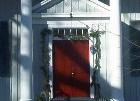 |
Hanover Arts and Activities
Center
Circa 1859. Built as Ashland Baptist
Church, the steeple has been removed. It has been an activities center since
1967.
Photographed 7 Jan 2008 and Contributed by George
Seitz. |
 |
Ashcake Inn An
old postcard
showing the place on the Ashcake Road, near Route 1. Built as a residence
and used as a
hospital during the Civil War. It operated as a Tea Room in the 1930s
and, as shown, as
The Virginia Country Store. It was razed after 1980.
Contributed by George Seitz. |
 |
Ashland Rolling Mills Home of
Patrick Henry flour, meal and feed, one of the oldest mill sites in the
county, on the
South Anna River. Originally known as Darracott's Mill, it was bought by
W.W.Newman in
1872. During the devastation of the Johnston Flood in 1889, the mill was
washed away, but
the milldam remained. The mill was rebuilt in 1892 and Newman's son,
E.W. became the
owner of the mill and president of the Piedmont Miller's Association.
Still in business
and sets on Route 1.
Photographed 13 Apr 2008 and Contributed by Paula Lucy
Delosh |
 |
Ashland Station A southbound Amtrak
is passing through the center of town. The tracks go down the middle of
Center Street
which is the old business district and very unique. The original station
was built in the
1850's but destroyed several times during the Civil War and the current
building was built
in the early 1920's.
Photographed Nov 1999 and Contributed by Gill
Pollard |
 |
Beaverdam Station The original
station was burnt during the Civil War after Col. John Mosby CSA was
captured
while waiting on a train.
Photographed Nov 1999 and Contributed by Gill
Pollard |
 |
Booker's
Located on Route 301
near Shady Grove Road. It was a two-story frame
house built over a brick English type basement. It was on a 125 acre tract in
1865. A United States Post Office now occupies the location.
Photographed April 1996 and Contributed by George
Seitz |
 |
Buckeye A
typical early Tidewater
Virginia home. William Pollard, clerk
of Hanover from 1740 to 1781, lived here.
Photographed 27 Oct 2007 and Contributed by George Seitz.
|
 |
503 Center Street South A square
two-story frame house, in Ashland, erected prior to the War between the
States. A
distinctive feature is the porch
with a room above it.
Photographed 5 Oct 2007 and Contributed by George Seitz
|
 |
600 Center Street South In
Ashland. Originally a plantation house
before Ashland was developed. It was the home of the Stebbins family.
Stebbins was
a Richmond merchant who used this as his summer home before the Civil War,
but moved here permanently during the conflict. It has seven heart-pine
mantels and a walnut stairrail.
Photographed 7 Jan 2008 and Contributed by George
Seitz |
 |
700 Center Street South A
two-story cottage, in Ashland, one room and a
hall wide. Built before the Civil War.
Photographed 5 Oct 2007 and Contributed by George Seitz
|
 |
702 Center Street South In
Ashland. Probably built around 1849. It was
built by the railroad and was called "The Club House" It was a private school
at one time.
Photographed 5 Oct 2007 and Contributed by George Seitz
|
 |
706 Center Street South In
Ashland. Erected in 1858. One of the owners
was Elmira Shelton Royston, who was Edgar Allan Poe's "Lost Lenore."
Photographed 7 Jan 2008 and Contributed by George Seitz.
|
 |
716 Center Street South Built by
1857.
Photographed 7 Jan 2008 and Contributed by George Seitz.
|
 |
Church Quarter
Thought to be one
of the oldest unaltered log cabins on the east coast. It is said that
Stonewall Jackson
stopped here during the Civil War. It is owned by the Daughters of the
American
Revolution.
Contributed by George Seitz |
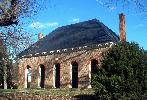 |
County Courthouse Built about
1733. It has a brick arcaded piazza, a
tall hip roof and a fine cornice with heavy dentils. It is where Patrick
Henry
first practiced law.
Photographed 27 Nov 2007 and Contributed by George Seitz
|
 |
Denton's Tavern Likely built by
Allen Denton, it was owned by him
according to the 1810 census, It served as the post office and the area was
known
as Dentonville. Later owned by various families, including the Rocks, the
area is now known as Rockville.
Photographed 3 May 2008 and Contributed by George
Seitz. |
 |
Ditchley In Old
Church, it was
built before the Civil War. Then the home of Robert W. Tomlin, it has
fourteen foot
ceilings and six foot wide windows.
Photographed 7 Jun 2009 and Contributed by George
Seitz. |
 |
Doswell station (built 1920s) at
the point where the RF&P and C&O railroads crossed. At the right is the HN
tower which once
controlled the switching. This site is between US 1 and I95 on SR 688. Robert
E. Lee's tent was
located to the left toward the small tree during the North Anna battle.
Photographed 11/99 and Contributed by Gill Pollard |
 |
Dry Bridge Built in 1854, it was
originally the overseer's cottage for the nearby farm known as Burnetts.
It is known as
Dry Bridge because the bridge to it goes over dry land, the RF&P
railroad.
Photographed 29 March 2008 and Contributed by George
Seitz. |
 |
Duncan Memorial Chapel Erected in
1879, it is part of the
Randolph-Macon College Complex and is a registered Virginia Historic
Landmark.
Photographed 12 Nov 2007 and Contributed by George
Seitz. |
 |
Duncan Memorial Chapel Plaque
embedded in wall above entrance.
Photographed 10 Aug 2008 and Contributed by Paula Lucy
Delosh |
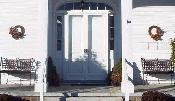 |
Dunn's Chapel
Built in 1883.
Photographed 2 Feb 2008 and Contributed by George Seitz
|
 |
Eagle Point
Built about 1840.
The wing was added. It has original floors
and mantels. The farm is now used for raising and training horses.
Photographed 16 Nov 2007 and Contributed by George Seitz
|
 |
Egypt Built
before the Civil War
for Walker Hogan. It's on Cold Harbor Road near the Gaines' Mill
battlefield.
Photographed 7 Jun 2009 and Contributed by George
Seitz. |
 |
Ellington
Circa 1830. It was the
home of Dr. Thomas Fox. During the Civil War Battle of the North Anna,
General Robert E.
Lee was nearly struck by artillery fire while on the porch.
Photographed 15 Apr 2010 and Contributed by George
Seitz. |
 |
The Elms The
home of Dr. Thomas
Kinny during the Civil War, he cared
for the wounded here. There are marks on the floor where the beds were bolted
down, as well as blood stains that will not come off.
Photographed 18 Dec 2007 and Contributed by George Seitz.
|
 |
Elon Built in
1847 for Linneaus
Anderson. It has stood empty for many years.
Photographed 6 Nov 1994 and Contributed by George
Seitz. |
 |
Enon United Methodist Church
Founded in 1837. One of the largest
cavalry battles of the Civil War occurred here. 27 unknown Confederate
soldiers are
buried in the yard.
Photographed 27 Oct 2007 and Contributed by George
Seitz. |
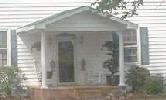 |
Fairview Tradition has it that the
structure was built as a tobacco
barn that was converted to a dwelling prior to the Civil War.
Photographed 3 May 2008 and Contributed by George
Seitz. |
 |
Fork Church Built 1735 it's a
church of St. Martin's Parish, deriving it's name from its proximito to
the confluence of
the North and South Anna Rivers. It maintains many of its early
furnishings. Patrick Henry, Dolley Madison and Thomas Nelson Page are among
the
notable persons who attended services there. From 1893 to 1903 the rector was
S. S.
Hepburn, grandfather of the actress Katherine Hepburn.
Photographed 21 July 2007 and Contributed by George
Seitz |
 |
French Hay
During the American
Revolution the Marquis de Lafayette once
had his headquarters on the Sumpter estate. When he returned to France he
sent back some hay seed which produced a splendid crop. Neighbors came to get
seed, and began to call the place French Hay. The plantation is gone, a
victim
of development. A Home Depot Store is there now.
Photographed 8 Nov 2002 and Contributed by George Seitz.
|
 |
Garthright House Miles and
Margaret Garthright lived here through the Civil War. During the Battle
of Cold Harbor in
June 1864, the Union turned this middle-class plantation into a field
hospital. The
Garthrights were forced to the basement, where they saw the blood drip
through the floor.
Photographed 7 Jun 2009 and Contributed by George
Seitz. |
 |
Glascock House Said to have been
built around 1784. The right side of
the house is the oldest and the adjacent room was built early on, both of log.
Both had exterior doors but no connecting door, the logs being too difficult
to
cut through.
Photographed and Contributed by George Seitz. |
 |
Hickory Well
built before the
Civil War, it belonged to the Gentry family. It is a frame home over an
English basement,
two rooms deep with a center hall.
Photographed March 2007 and Contributed by George Seitz
|
 |
Hanover Tavern
Built about 1723,
it was purchased in 1760 by Patrick Henry's father-in-law, John Shelton.
In 1781
Cornwallis stayed there while pursuing Lafayette toward Yorktown
Photographed March 2007 and Contributed by George
Seitz |
 |
Holly Hill
There is a brick in
the chimney dated 1762. The sills are
hewn and put together with wooden pegs.
Photographed 7 May 2007 and Contributed by George Seitz.
|
 |
Immanuel Episcopal Church Consecrated 3 April 1854 by the
Right Reverend John Johns, it is listed in the National Register of
Historic Places and has been registered as a Virginia Historic Landmark.
Photographed 18 Aug 2007 and Contributed by George Seitz.
|
 |
Old Jail Made
of stone. Heavily
studded double doors mark the only
entrance, the outermost made of thick iron bars. It now holds the artifacts of
the
Hanover County Historical Society.
Photographed 21 July 2007 and Contributed by George
Seitz |
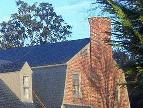 |
Lakewood Built
before 1800. The
south wing is the original. It has
heavy heart pine doors, five panels with whip-sawn frames.
Photographed 28 Dec 2007 and Contributed by George Seitz
|
 |
Laurel Meadow
An English type
farmhouse that dates back to the Colonial
era. It was reported that General Stonewall Jackson spent the night here in
1862.
Photographed 18 Dec 2007 and Contributed by George Seitz.
|
 |
Lombardy from
the mid 18th
century, it was owned by Revolutionary soldier Major William Duval.
Photographed June 11, 1995 and Contributed by George
Seitz |
 |
Marl Ridge
Built before the
Revolution, it was one and a half story
high then. Colonel Tarleton camped there. During the War Between the States,
Union Cavalry under General Stoneman and General Sheridan stopped there.
Photographed 27 Nov 2007 and Contributed by George Seitz
|
 |
Marlbourne Finished in 1840, it
was the home of agriculturist and
secessionist Edmund Ruffin. Its name comes from Ruffin's use of marl in
preparing his
fields. During his time the plantation was an agricultural showplace. Edmund
Ruffin has long been given credit for firing the first shot of the Civil War.
Marlbourne suffered heavily during the conflict. Family letters speak of the
desolation. Ruffin swore he would never live under Union rule. In 1865 he took
his own life and is buried on the property.
Photographed 2 Jan 2009 and Contributed by George
Seitz. |
 |
McGhee's Built
before the War
between the States. It is a frame farm
house with an English basement and center hall.
Photographed 30 Oct 2007 and Contributed by George
Seitz. |
 |
Newmarket The
sole survivor of a
large plantation complex that once
included a gristmill, tanyard and cotton factory. James Doswell, a
Revolutionary
War veteran, probably built it in the late eighteenth century. It was moved
to its present location in 1987.
Photographed 19 Apr 2008 and Contributed by George
Seitz. |
 |
Oak Forest
Located across the
road from Hickory Well, it likely is a Revolutionary War era home. It
belonged to the
Overton family. The Union army camped there on their way to Cold Harbor.
Photographed March 2007 and Contributed by George Seitz
|
 |
Oak Grove
Built in the mid 1780s
by the Haw family, ownership remained with that family for 160 years. It
was the site of a
fierce Civil War cavalry battle.
Photographed March 2007 and Contributed by George Seitz
|
 |
Oak Knoll
built before 1840.
There was a family graveyard that had a
marker listing someone had died there in 1780, indicating there was once an
older home on the site. It was on Route 301. Oak Knoll Middle School now
occupies the property.
Photographed November 1994 and Contributed by George
Seitz |
 |
The Oaks Built
before 1850. There
is a stain on the floor which,
according to tradition, is a blood stain from the Civil War when the wounded
were
cared for here.
Photographed 18 Dec 2007 and Contributed by George Seitz.
|
 |
Old Church Tavern This very old
ordinary was once at a very busy crossroads. It is difficult to determine
how long it has
been there. In 1853 it belonged to Lewis Johnson. In 1858 he sold it to
James A. Lipscomb.
Photographed 7 Jun 2009 and Contributed by George
Seitz. |
 |
Oldfield Also
known as Mr.
Dandridge's Place. Circa 1744, the Marquis de LaFayette made a brief stop
there in 1781.
It's reported by Robert Szabo, that Oldfield was NOT the residence of
Nathaniel West Dandridge.
Photographed 27 Apr 2010 and Contributed by George
Seitz. |
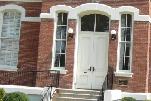 |
Pace-Armistead Hall At
Randolph-Macon College, in Ashland
Photographed 10 Aug 2008 and Contributed by Paula Lucy
Delosh |
 |
Pace-Armistead Hall Plaque on
wall, next to entrance door.
Photographed 10 Aug 2008 and Contributed by Paula Lucy
Delosh |
 |
Point Lookout
The very old home
has been empty for years. It is framed
in heavy oak and has heart pine walls and floors. Two of the doors have
old-fashioned wooden hinges and are made of heavy oak. The addition of one
room
has made it L-shaped.
Photographed 16 Nov 2007 and Contributed by George Seitz.
|
 |
Pole Green Church Founded in 1748
by Reverend Samuel Davies. It stood
until 1864 when shells fired by the Richmond Howitzers at Union
sharpshooter's
in the church caused it ti burn to the ground.
Photographed 30 Oct 2007 and Contributed by George
Seitz. |
 |
Retreat The
orginal building was alled Mt. Brilliant when
built by Colonel John Henry. He lived there with his family until his
death in 1773. It
was later named Retreat and was aquired by Robert Carter Nicholas.
Cornwallis made Retreat
his headquarters for several days.
THIS house is reported by Robert Szabo, to not be the original.
Contributed by George Seitz |
 |
Rocketts Mill House On the
Newfound River, it was the scene of many
skirmishes during the Revolution. It also served as a post office.
Photographed 21 July 2007 and Contributed by George Seitz
|
 |
Rural Plains
Built ca. 1725. The
home of Sarah Shelton who married Patrick Henry. Severe damage from
Southern cannonballs
still show on the structure. Union General Winfield S Hancock used it for
his II Corps
headquarters.
Photographed Aug 2007 and Contributed by Paula Lucy
Delosh |
 |
Rutland The
home of the
Timberlake family for 200 years. It was built as a story and one-half
home before 1810.
July 12-21, 1862, Confederate General J.E.B. Stuart headquartered here
with his 3,000
horse cavalry encampment. After the War, the house was enlarged in the
Italianate style
and named Rutland. Originally 800 yards southeast of the present site, it
was moved by a
developer in 2007.
Photographed 7 Sep 2008 and Contributed by George
Seitz. |
 |
Scotchtown Best
known as Patrick
Henry's home from 1771 to 1778. It was
built by Charles Chiswell about 1719. [WPA Guide says abt1732]. Dolley Madison
lived there as a
child.
It was acquired by the Association for the Preservation of Virginia
Antiquities
and is open to the public.
Photographed 21 July 2007 and Contributed by George
Seitz |
 |
Shrubbery Hill
Circa 1838. Built
by Nathaniel Crenshaw. His son, John Bacon Crenshaw, a Quaker Minister,
inherited it.
Photographed 1 Jul 2010 and Contributed by George
Seitz. |
 |
Slash Church Erected in 1729-1732
as the Upper Church of Saint Paul's
Parish. Reverend Patrick Henry, uncle of the famous patriot, served as rector
from 1737 until 1777. This weatherboard structure survives as the oldest and
best-preserved frame colonial church in Virginia.
Photographed 8 Sep 2007 and Contributed by George
Seitz. |
 |
Squashapenny Junction It was
Darnell's store in Doswell. It now serves
as an eclectic antiques store.
Photographed 30 Oct 2007 and Contributed by George
Seitz. |
 |
Stagfield
Built in 1781 by David
Rowland. He enlarged it in 1811.
Photographed 23 Apr 1995 and Contributed by George
Seitz. |
 |
Stomping Branch Farm Circa 1854.
Built by James Davis. At one time it was rented to a son of President
Tyler.
Photographed 1 Jul 2010 and Contributed by George
Seitz. |
 |
Parson Stringfellow's Uniquely
built, with the entrance on the end and the hall running lengthwise. It
was the rectory of
Fork Church before the present one was built in 1842.
Photographed 15 April 2010 and Contributed by George
Seitz. |
 |
Swananna Named
for Dr. Thomas
Swan. It is from the 1850's.
Photographed 27 Apr 2010 and Contributed by George
Seitz. |
 |
Sycamore Tavern
Built
around 1734, it was a stagecoach stop on the road from Charlottesville to
Richmond.
It is registered as a Virginia Historic Landmark and has been placed on the
National Register of Historic Places. In the early twentieth century, Thomas
Nelson Page, the noted Virginia author, founded a library there and it
continues
to serve as such.
Photographed May 21, 2007, and Contributed by George
Seitz |
 |
Trimmer's Rocketts Once a tavern.
In the Old Church community. In 1837 it belonged to Bentley Tucker. By
1920 it was in the
Trimmer family.
Photographed 7 Jun 2009 and Contributed by George
Seitz. |
 |
Trinity Church Built in 1830 by
the Episcopalians under the leadership of
the Reverend John Cooke of the Parish of Saint Martin's
Contributed by George Seitz |
 |
Trinity Church Plaque Sign on
church building.
Contributed by George Seitz. |
 |
Twin Hill The
construction date
is not known. Records indicate it was
standing prior to 1846. In January, 1846 Berea Baptist Church was organized
in
this home.
Photographed 11 Oct 2007 and Contributed by George Seitz.
|
 |
503 Virginia Street In Ashland.
W.W. Bennett, President of
Randolph-Macon College lived here. It was moved from the campus to Virginia
Street.
Photographed 29 Oct 2007 and Contributed by George
Seitz. |
 |
Washington and Franklin Hall A
National and Virginia Historic Landmark. It
is the first brick building constructed on the campus of Randolph-Macon
College in Ashland.
Photographed 29 Oct 2007 and Contributed by George
Seitz. |
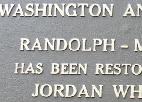 |
Washington and Franklin Hall
Plaque on building exterior. Built by Washington and Franklin Literary
Societies to house
the two groups and provide a debating venue.
Photographed 10 Aug 2008 and Contributed by Paula Lucy
Delosh |
 |
Watt House Now
a part of the
Richmond Battlefield Tour, it is believed
to have been built about 1836. It was the scene of fierce fighting during the
Battle of Gaines' Mill in 1862.
Photographed and Contributed by George Seitz |
 |
Westerham The
Georgian style
house has walls that are 22 inches thick. It was built before 1850.
Photographed 7 May 2010 and Contributed by George
Seitz. |
 |
White House
Built before the
Civil War it is also known as Fielder's Fields.
Photographed August 8, 1994 and Contributed by George
Seitz |
 |
Wickham School
The one-room school
house is 32 feet long and 16 feet
wide. It was set to be torn down, but Hanover County Black Heritage
researchers
have discussed the historic and cultural value of the old school. It's final
disposition is undetermined.
Photographed 2 Nov 2007 and Contributed by George
Seitz. |
 |
Woodson's Mill In operation by
1820, it was purchased by Calvin Woodson in 1915. He was the last miller
to own it. He
died in 1953.
Photographed 11 May 2010 and Contributed by George
Seitz. |
![]() Hanover
County Photo Album Index
Hanover
County Photo Album Index